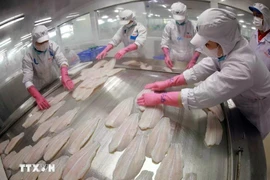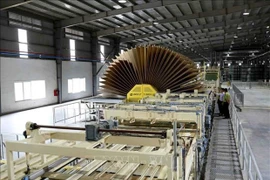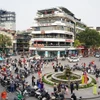Hanoi (VNS/VNA) - Minister of Agriculture and Environment Do Duc Duy has stressed that Vietnam’s forestry sector is at a pivotal moment, with the potential to surpass its traditional 5% growth rate and achieve double-digit expansion.
As one of the three pillars of the agricultural sector, alongside livestock and fisheries, forestry is being developed, not only with a focus on sustainability but also as a multi-objective industry that maximises its economic, environmental and climate resilience contributions.
Duy highlighted that Vietnam has 15.8 million hectares of designated forestry land, including 14.8 million hectares of forested land and nearly eight million hectares of production forests, providing significant opportunities for growth.
With an average annual production value increase of 4.7% and a trade surplus contributing 60% of the country’s total, the sector has made notable progress. However, Duy pointed out that its full potential remains untapped due to institutional barriers, insufficient investment, and slow technological adoption.
The minister identified several structural challenges, including inconsistent policies, weak forest management infrastructure, and inadequate investment from central to local levels. He also noted that scientific and technological applications in forestry remain limited.
Another major hurdle is overlapping forest ownership. Vietnam has nearly 1.2 million forest owners, with just 2,000 State-owned entities managing 50% of the total forest area. Additionally, balancing economic development with forest conservation continues to be a pressing challenge.
Deputy Minister of Agriculture and Environment Nguyen Quoc Tri emphasised that forestry planning is frequently affected by competing priorities such as transportation, infrastructure and economic development, making forest management more complex. He also pointed out that forest support policies are fragmented and prone to overlaps, reducing their effectiveness.
To address these challenges, the Government has strengthened decentralisation, granting local authorities greater flexibility in implementation. However, Duy stressed that significant investments in high-quality human resources and infrastructure are still needed to meet modern development demands.
The Director of the Department of Forestry and Forest Protection, Tran Quang Bao, proposed incorporating revenue from forest environmental services, approximately 3 trillion VND ($118 million) per year, into the sector’s official production value. This, he argued, would better reflect forestry’s contributions to the economy and provide a crucial funding source for reinvestment in forest quality and community support.
To drive the sector forward, Minister Duy outlined a development strategy centred on 'multi-value, multi-objective' growth.
"Forestry is not just an economic sector; it is deeply linked to environmental protection, ecological conservation and sustainable development," he emphasised.
The strategy is centred on a number of key priorities, including institutional and policy reforms to eliminate regulatory overlaps in forestry, land management and biodiversity conservation, sector restructuring and technology adoption to modernise forest management and enhance disaster resilience, diversified forest-based economic activities, including under-canopy farming, eco-tourism, and conservation initiatives and human resource and infrastructure investments to support long-term development.
Duy highlighted the importance of digital transformation, citing the pilot project for plantation coding across 10 provinces in 2024 as a step toward building a national plantation database and timber traceability system to enhance transparency and export value.
The Minister also underscored the role of carbon credits as a 'valuable national asset' and a potential bargaining tool in international climate negotiations. He called for policies that incentivise environmental protection, expand the carbon credit market, and improve financial support for forestry workers.
"Current forest protection payments are too low to ensure stable livelihoods for local communities," Duy noted, emphasising that this remains a major barrier to rural development in remote areas.
With these strategic shifts, Vietnam’s forestry sector is poised for a transformative leap, unlocking new economic potential while reinforcing its critical role in environmental sustainability and climate resilience./.
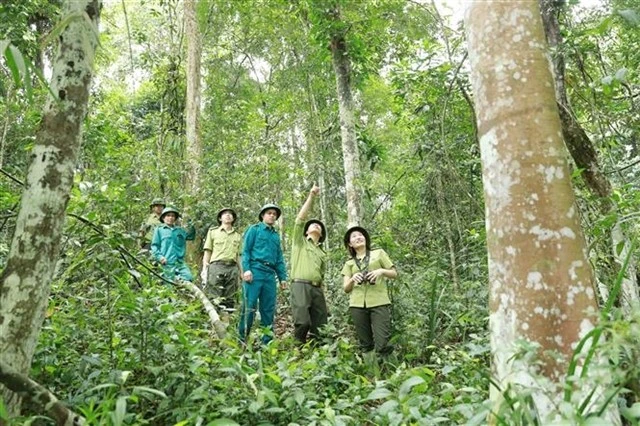
See more
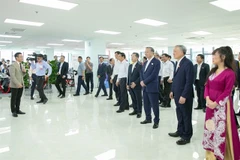
Da Nang launches key projects in data centre, semiconductor and AI
That includes ten racks for cloud computing services, AI applications, cyber security, with a total investment in the first phase of 800 billion VND (32 million USD).
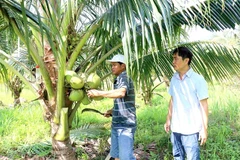
Northern Europe is potential market for Vietnamese organic products
To successfully penetrate this market, Vietnamese businesses must ensure their products meet these high standards, including obtaining certifications like EU Organic Certification and complying with environmental and labour safety regulations.
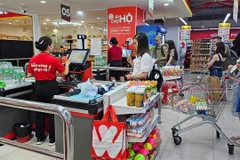
Retail stocks see promising outlook this year
With economic stability, policy support and a shift in consumer behaviour, retail and consumer stocks are emerging as key beneficiaries.
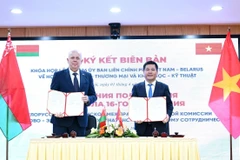
Vietnam, Belarus unveil key solutions to boost trade
Vietnam and Belarus are set to deepen bilateral cooperation in all fields, particularly in economy-trade and science-technology, through their Intergovernmental Committee mechanism, affirmed Minister of Industry and Trade Nguyen Hong Dien.
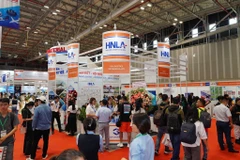
HCM City to host third Vietnam int’l logistics exhibition
With the theme 'Green Logistics – the Foundation for Sustainable Development' VILOG 2025 aims to address pressing challenges in the logistics sector by emphasising sustainability and innovation.
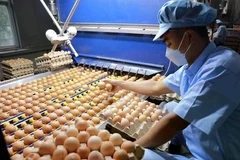
Singapore opens market to some Vietnamese poultry meat, eggs
On March 11, the Singapore Food Agency (SFA) issued an official document approving several livestock products from Vietnam to enter Singapore.

Honda Vietnam has new female CEO
Sayaka Hattori, a Japanese national with over 25 years of experience in the automobile and motorcycle industry, was appointed as new CEO of Honda Vietnam on April 1.
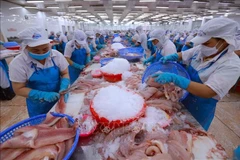
Agro-forestry-aquatic product exports increase over 13% in first quarter
According to the Ministry of Agriculture and Environment, Vietnam recorded a trade surplus of 4.4 billion USD in agro-forestry-aquatic products in the first quarter, up 13.1% compared the same period last year.
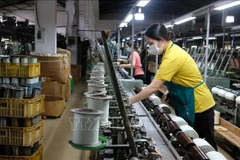
Annual enterprise census kicks start nationwide
The survey will span all the 63 provinces and centrally-run cities in Vietnam, targeting enterprises and cooperatives engaging in production and business activities across almost all sectors.

Vietnam-China border gate pair officially opens for trade
Located at Border Marker 456 in Ha Giang’s Meo Vac district, the Sam Pun border gate has long served as a vital trade gateway between Vietnam and China.
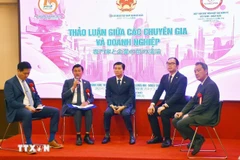
Long An province strengthens investment, trade cooperation with Japan
Japanese investors have poured over 1.2 billion USD into 162 projects in Long An, and their contributions play a crucial role in the province’s socio-economic development, a local official has said.
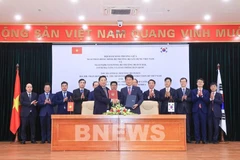
Vietnam calls on RoK to share expertise in high-speed railway development
Minister of Construction Tran Hong Minh applauded the RoK’s proposal to organise a railway cooperation forum, seeing it as an opportunity for state management agencies, experts, research institutions, universities, and businesses of Vietnam to gain insights from the RoK’s experience in planning, construction, maintenance, and developing high-speed rail industry.

Vietnam, RoK step up railway development cooperation
Since 1996, the Korean government has provided funding for Vietnam’s transport infrastructure development. To date, the two countries have successfully completed nine projects, with total loans of over 1 billion USD, and are currently working on six other projects with loans worth nearly 600 million USD.
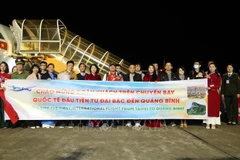
Quang Binh province welcomes first flight from Taiwan
These international flights, the first of their kind, marked a significant milestone for the Dong Hoi airport, particularly following its designation as one of three domestic airports authorised to process foreign passengers' arrivals and departures using electronic visas.
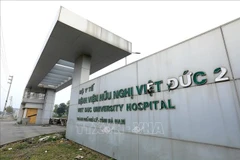
PM orders urgent reviews, reports of delayed investment projects
The dispatch highlights that ministries, sectors, and localities involved must intensify their efforts to resolve these stalled investment projects in a bid to accelerate socio-economic development and prevent waste of state, business, and public resources.
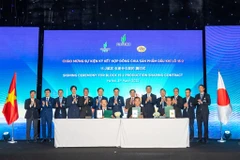
Vietnam, Japan forge 25-year oil and gas partnership
Son noted the Block 15-2 contract is a crucial step after the 2022 Law on Oil and Gas took effect, urging contractors to carry out their commitments to maximise the productivity of the block as well as enhance oil recovery rate – an important task to ensure energy security.
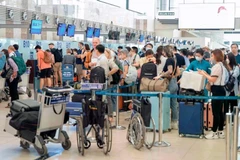
Domestic flights during April 30 - May 1 holidays expected to increase over 20%
This year, civil servants, employees and workers in Vietnam will enjoy a five-day break from April 30 to May 4 on the occasion of the Reunification Day (April 30) and International Workers’ Day (May 1).
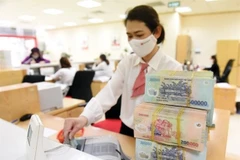
Central bank required to consider proposals on Basel III application
The direction is under the newly-issued Prime Minister's Directive 09/CT-TTg on the tasks and solutions of State-owned enterprises (SOEs) to contribute to the Government’s double-digit economic growth target.
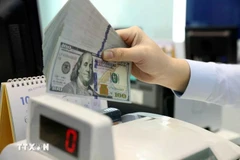
Reference exchange rate down 2 VND on April 1
The State Bank of Vietnam set the daily reference exchange rate for the US dollar at 24,835 VND/USD on April 1, down 2 VND from the previous day.
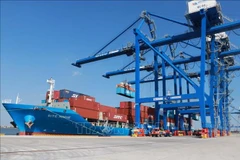
Phuoc An port welcomes first SITC container vessel
As the largest seaport in Dong Nai, it includes a 160-hectare terminal area with a total berth length of over 2,800 metres, featuring nine container berths capable of handling vessels up to 100,000 DWT. Upon full completion, the port will have an annual capacity of handling 7 million TEUs.

